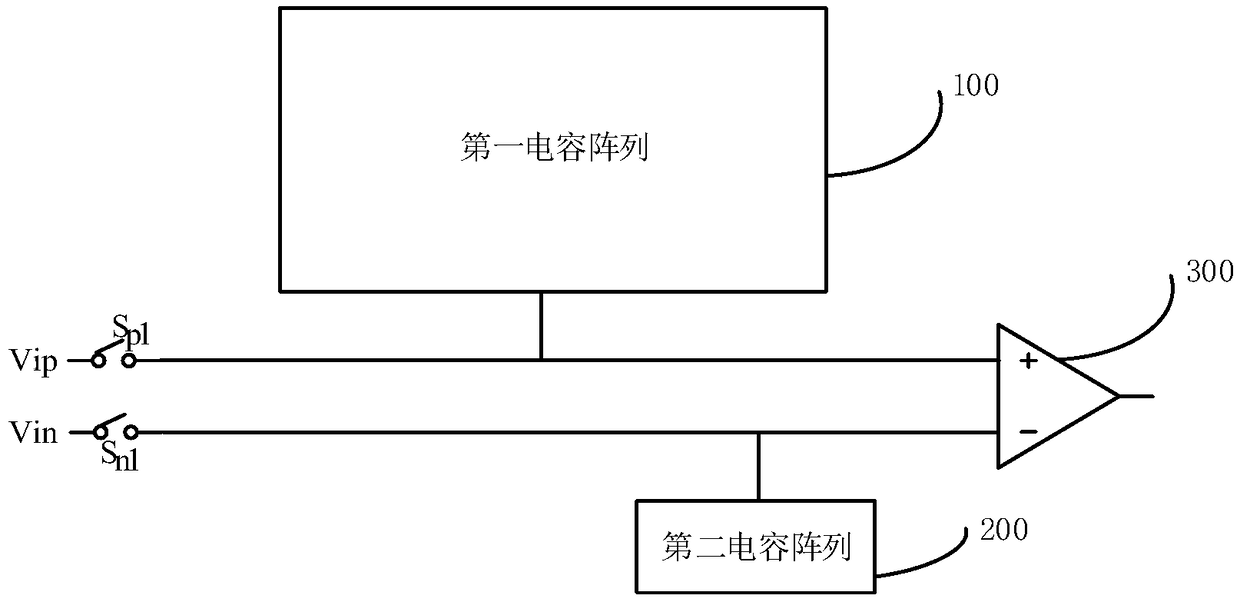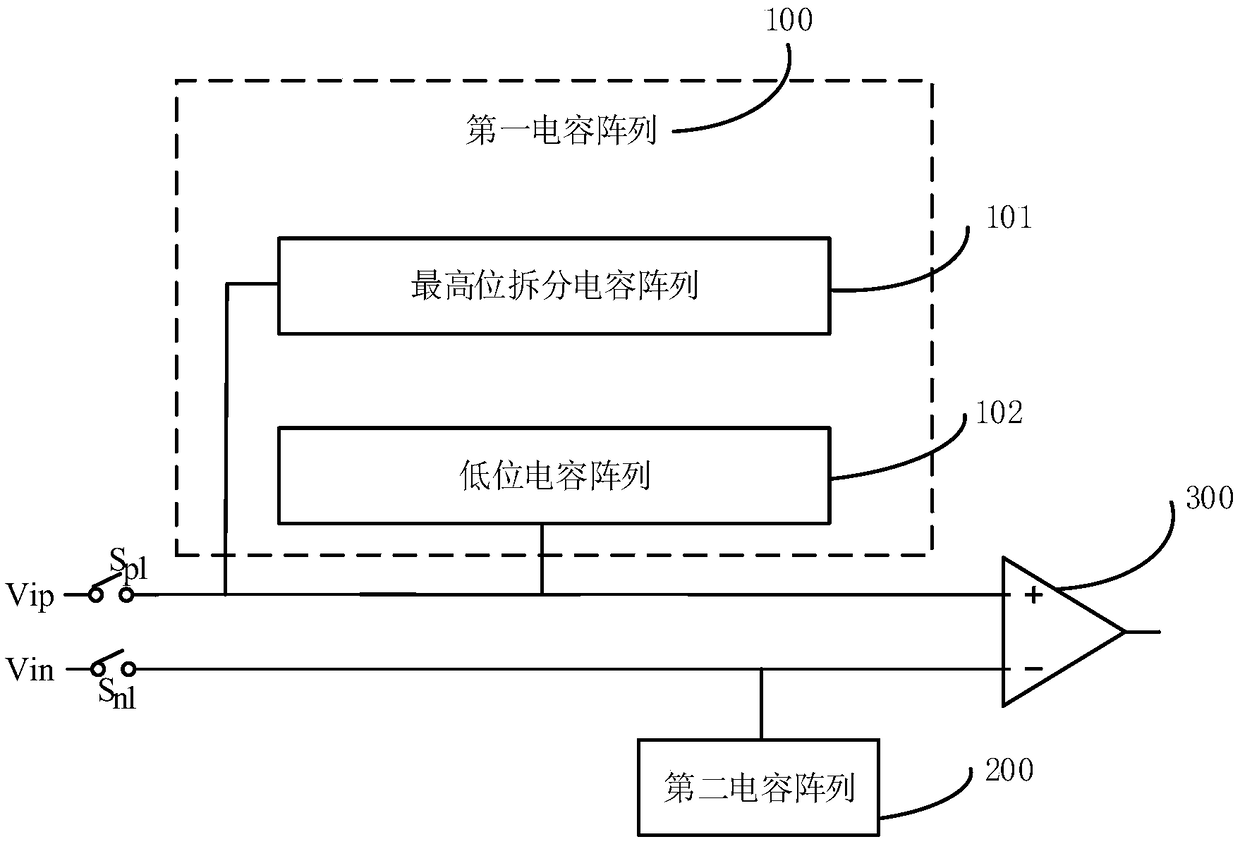Digital-analog converter of successive approximation type
A digital-to-analog converter, successive approximation technology, applied in analog-to-digital conversion, code conversion, instruments, etc., can solve the problems of high switching power consumption and large capacitor array area, and achieve reduced switching power consumption and capacitor array area. Reduced, highly linear effects
- Summary
- Abstract
- Description
- Claims
- Application Information
AI Technical Summary
Problems solved by technology
Method used
Image
Examples
Embodiment 1
[0035] Such as figure 1 The successive approximation digital-to-analog converter shown includes: a first input terminal Vip, a second input terminal Vin, a first capacitor array 100; a second capacitor array 200, a first switch S p1 , the second switch S n1 and comparator 300, wherein the first input terminal Vip passes through the first switch S p1 It is electrically connected to the non-inverting input terminal of the comparator 300, and the first capacitor array 100 is electrically connected to the non-inverting input terminal of the comparator 300; the second input terminal Vin passes through the second switch S n1 It is electrically connected to the inverting input terminal of the comparator 300 , and the second capacitor array 200 is electrically connected to the inverting input terminal of the comparator 300 .
[0036] Such as figure 2 As shown, the first capacitor array 100 includes a highest-order split capacitor array 101 and a low-order capacitor array 102 , and...
Embodiment 2
[0061] Such as Figure 5 to Figure 10 As shown, in this embodiment, the switching sequence of 10 bits is taken as an example, and the 10 bits are compared ten times by successive approximation. The specific instructions are as follows:
[0062] In the sampling phase, the upper plate of the first capacitor array 100 and the upper plate of the second capacitor array 200 sample the input analog signal; after the sampling is completed, the 10th bit is compared, and after completion, the successive approximation control logic is based on the result of the initial comparator 300 Determine b(N), 1≤N≤10, if Vip10>Vin10, b10=1, then control the unit capacitance of the second capacitor array 200 to switch from the common mode voltage Vcm to the power supply potential Vref; if Vip<Vin, then the second The unit capacitance of the capacitor array 200 is switched from the common mode voltage Vcm to the ground Gnd, b10=0;
[0063] In the comparison of the 9th bit, if Vip9>Vin9, the voltage...
PUM
 Login to View More
Login to View More Abstract
Description
Claims
Application Information
 Login to View More
Login to View More - R&D
- Intellectual Property
- Life Sciences
- Materials
- Tech Scout
- Unparalleled Data Quality
- Higher Quality Content
- 60% Fewer Hallucinations
Browse by: Latest US Patents, China's latest patents, Technical Efficacy Thesaurus, Application Domain, Technology Topic, Popular Technical Reports.
© 2025 PatSnap. All rights reserved.Legal|Privacy policy|Modern Slavery Act Transparency Statement|Sitemap|About US| Contact US: help@patsnap.com



